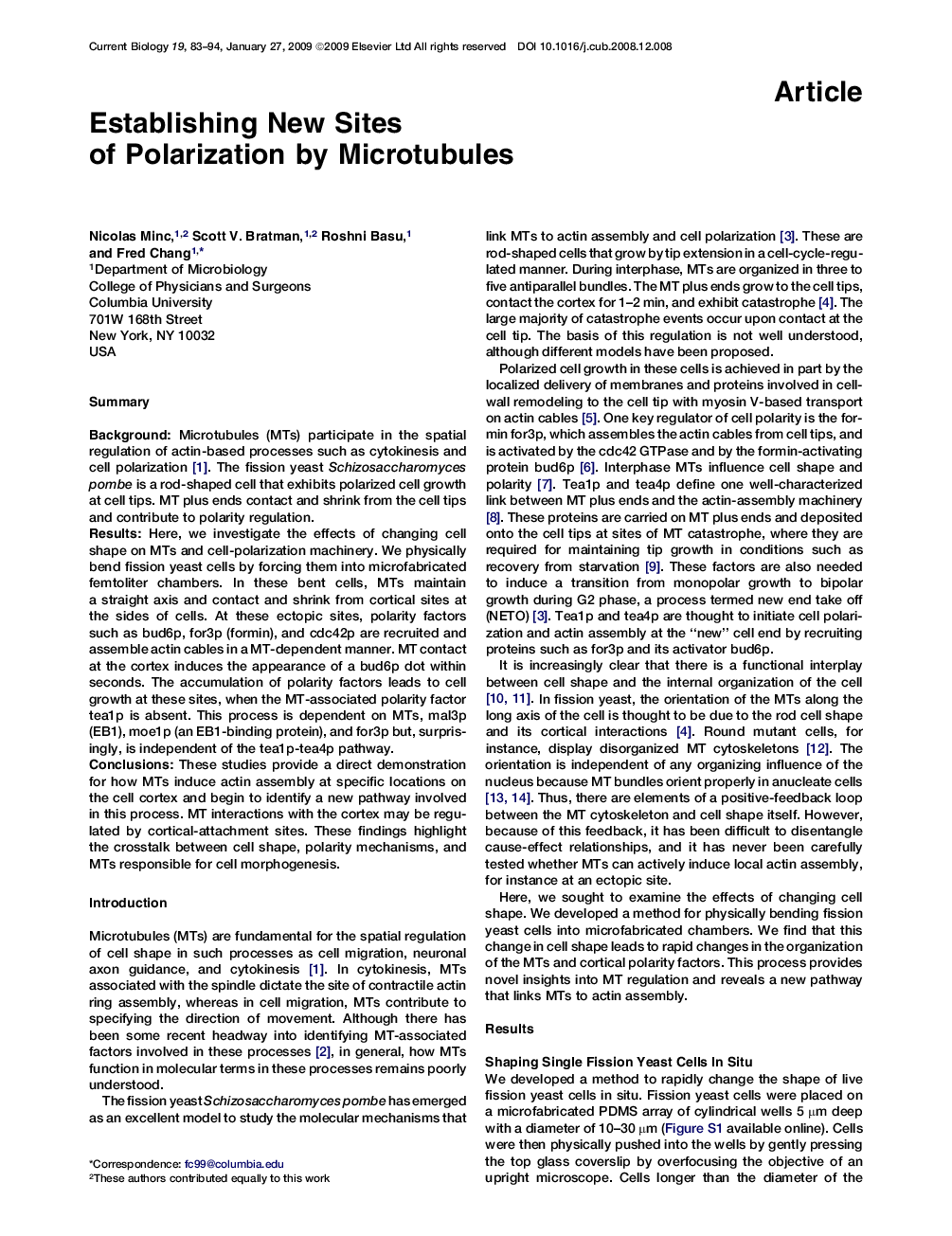| Article ID | Journal | Published Year | Pages | File Type |
|---|---|---|---|---|
| 2044470 | Current Biology | 2009 | 12 Pages |
SummaryBackgroundMicrotubules (MTs) participate in the spatial regulation of actin-based processes such as cytokinesis and cell polarization [1]. The fission yeast Schizosaccharomyces pombe is a rod-shaped cell that exhibits polarized cell growth at cell tips. MT plus ends contact and shrink from the cell tips and contribute to polarity regulation.ResultsHere, we investigate the effects of changing cell shape on MTs and cell-polarization machinery. We physically bend fission yeast cells by forcing them into microfabricated femtoliter chambers. In these bent cells, MTs maintain a straight axis and contact and shrink from cortical sites at the sides of cells. At these ectopic sites, polarity factors such as bud6p, for3p (formin), and cdc42p are recruited and assemble actin cables in a MT-dependent manner. MT contact at the cortex induces the appearance of a bud6p dot within seconds. The accumulation of polarity factors leads to cell growth at these sites, when the MT-associated polarity factor tea1p is absent. This process is dependent on MTs, mal3p (EB1), moe1p (an EB1-binding protein), and for3p but, surprisingly, is independent of the tea1p-tea4p pathway.ConclusionsThese studies provide a direct demonstration for how MTs induce actin assembly at specific locations on the cell cortex and begin to identify a new pathway involved in this process. MT interactions with the cortex may be regulated by cortical-attachment sites. These findings highlight the crosstalk between cell shape, polarity mechanisms, and MTs responsible for cell morphogenesis.
